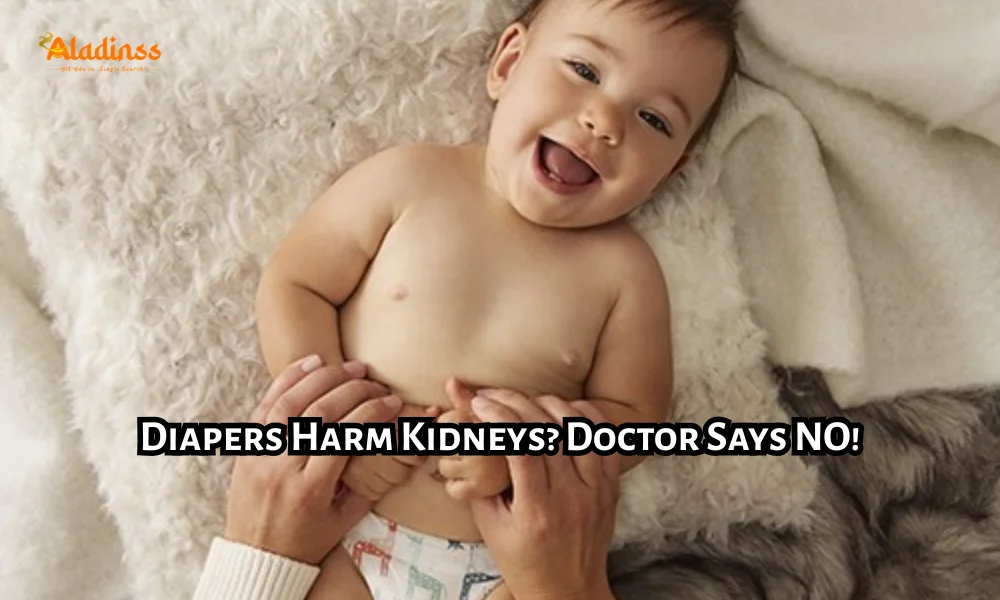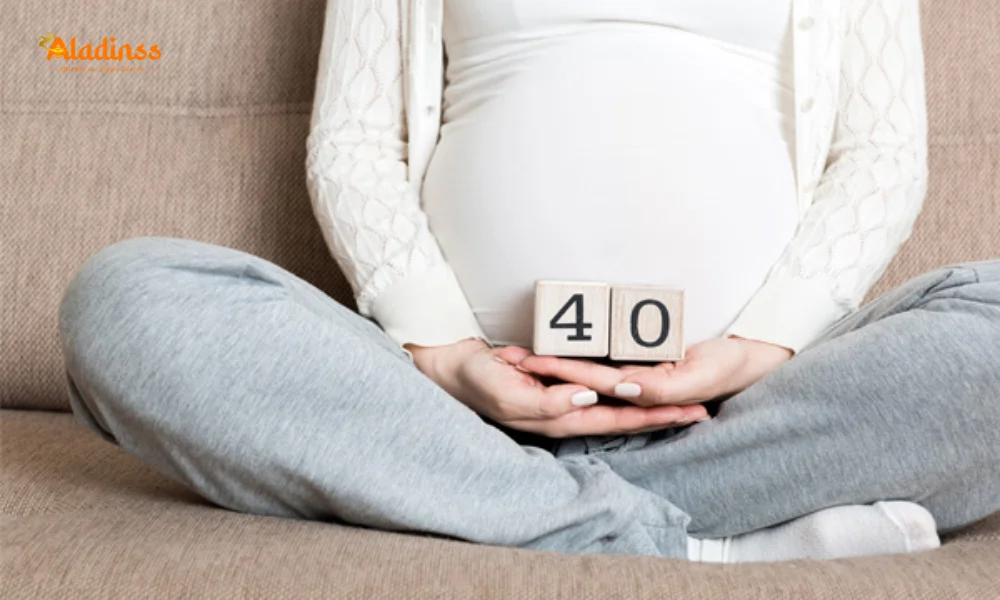Top Pediatrician Debunks Diaper Kidney Damage Myth

Viral Alert Debunked: Do Diapers Really Damage Baby Kidneys?
A disturbing video circulating on social media has left thousands of parents worried, claiming that regular diaper use harms infant kidneys. The alarming message suggests prolonged exposure to wetness inside diapers leads to irreversible renal damage. However, top pediatricians have stepped forward to set the record straight. Diapers do not cause kidney problems when used correctly. The real risk lies in poor hygiene practices, not the diaper itself.
Dr. Shelly Awasthi, former Head of Pediatrics at King George’s Medical College, Lucknow, firmly dismisses the viral claim as misinformation. Kidneys function internally to filter blood and produce urine, while diapers serve only as external absorbers. There is no physiological pathway connecting diaper material to renal tissue unless infections are allowed to develop through neglect.

Why the Kidney Damage Claim is Scientifically Impossible
The kidneys sit deep within the abdominal cavity, protected by layers of muscle and fat. Urine exits via the urethra a completely separate system from the skin surface where diapers rest. No chemicals from modern diapers migrate through multiple tissue barriers to reach renal structures. Clinical studies spanning decades confirm zero correlation between standard diaper usage and kidney function decline in healthy infants.
Super-absorbent polymers in diapers convert liquid into gel, preventing urine from pooling against skin. This technology, refined since the 1980s, actually reduces moisture-related complications compared to cloth alternatives. The viral video ignores basic anatomy and misrepresents temporary skin irritation as organ damage a dangerous distortion of medical facts.
Longitudinal research following diapered versus non-diapered populations shows identical kidney development milestones. Ultrasound scans of toddlers reveal normal renal growth regardless of diapering method. Only severe, untreated urinary tract infections rare with proper care pose any threat, and these stem from bacterial ascension, not fabric contact.
The Actual Danger: Neglected Hygiene and Infections
Leaving a soiled diaper unchanged for over 4–6 hours creates a warm, moist environment perfect for bacterial growth. Fecal matter contains E. coli and other pathogens that can travel upward through the urethra, especially in girls due to shorter urinary tracts. Repeated infections may scar kidney tissue if ignored, but this sequence begins with hygiene failure not the diaper material itself.
Diaper rash, often confused with deeper issues, results from prolonged skin exposure to urine and stool enzymes. Severe cases lead to open sores where bacteria enter bloodstream, potentially reaching kidneys in extreme neglect scenarios. Changing diapers every 3–4 hours prevents 95% of related complications. Nighttime use is safe provided morning changes occur immediately upon waking.
A 2022 study in the Indian Journal of Pediatrics analyzed 1,200 infants and found no difference in UTI rates between exclusive diaper users and cloth-nappy users when hygiene protocols were followed. The determining factor was change frequency, not absorption method. Parents skipping overnight changes showed triple the infection risk regardless of diaper type.
Recognizing Urinary Tract Infections in Babies
Infants cannot verbalize discomfort, making symptom awareness critical. Watch for unexplained fever above 100.4°F, excessive crying during urination, refusal to feed, or unusually foul-smelling urine. Vomiting, lethargy, or blood-tinged diapers signal urgent medical need. Girls under age two face higher vulnerability due to anatomical proximity between anus and urethral opening.
Pediatric nephrologists stress that early antibiotic treatment cures most UTIs within 72 hours, preventing ascent to kidneys. Delaying care risks pyelonephritis inflammation that can cause permanent scarring. However, routine diaper use does not predispose babies to initial bacterial entry when wiping front-to-back and cleansing thoroughly during changes.
Home urine test strips detect nitrites and leukocytes, offering preliminary screening. Positive results warrant immediate pediatric evaluation with culture confirmation. Breastfed babies benefit from maternal antibodies that reduce infection severity, but formula-fed infants require equal hygiene vigilance.
Expert-Approved Diaper Hygiene Protocol
Establish a structured routine to eliminate risks entirely. Cleanse genital area with lukewarm water and fragrance-free wipes, patting dry before applying fresh diaper. Use zinc-oxide barrier creams proactively on reddened skin. Allow 5–10 minutes of diaper-free time daily to promote air circulation and natural drying.
- Change schedule: Every 3–4 hours daytime; immediately if soiled
- Cleansing method: Front-to-back wiping, especially for girls
- Product selection: Breathable, dye-free, hypoallergenic brands
- Skin protection: Coconut oil or petroleum jelly on irritated areas
- Night protocol: Extra-absorbent overnight diapers with morning priority change
Avoid talcum powder due to inhalation risks. Choose size-appropriate diapers to prevent leakage and chafing. Rotate brands occasionally to identify sensitivity triggers. Cloth diaper users must wash at 60°C with baby-safe detergent and sun-dry for natural disinfection.
Choosing the Right Diaper for Sensitive Babies
Premium diapers feature indicator strips that change color when wet, prompting timely changes. Plant-based options with bamboo or organic cotton reduce chemical exposure for eczema-prone skin. Gel-free variants suit ultra-sensitive infants, though absorption capacity may decrease slightly.
Dermatologist-tested labels ensure minimal irritants. Avoid scented diapers entirely fragrances mask odors but trigger contact dermatitis. Bulk buying requires storage in cool, dry conditions to preserve integrity. Check expiry dates; degraded polymers lose effectiveness and increase leak risks.
Eco-conscious parents balance convenience with sustainability. Biodegradable diapers decompose faster but cost more. Hybrid systems combining reusable outer covers with disposable inserts offer middle-ground solutions. Local pediatricians can recommend regionally available trusted brands based on water quality and climate factors.
Cloth Diapers vs Disposable: Kidney Safety Comparison
Traditional cotton nappies require frequent changing every 2 hours to match disposable performance. Improper laundering leaves detergent residue that irritates skin, paradoxically increasing infection pathways. Modern cloth systems with waterproof PUL layers and snap fasteners improve containment when used correctly.
A 2023 meta-analysis in Pediatric Nephrology found equivalent UTI incidence between well-managed cloth and disposable users. The key variable remained change frequency and cleansing thoroughness. Cost savings with cloth become significant after 6 months, though initial investment and laundry time deter some families.
Travel scenarios favor disposables for convenience, while home routines support cloth rotation. Many parents adopt hybrid approaches disposables for outings, cloth at home. Both methods protect kidneys equally when hygiene standards never lapse. Choice depends on lifestyle, budget, and environmental priorities.
When to Consult a Pediatrician Immediately
Persistent diaper rash beyond 72 hours despite treatment warrants professional evaluation. Cloudy urine, crying during urination, or fever without cold symptoms demand urgent care. Blood in urine or stool requires emergency department visitation. Recurrent infections may indicate anatomical issues needing ultrasound screening.
Vaccination schedules should continue uninterrupted rotavirus and pneumococcal vaccines reduce secondary infection risks. Probiotics in formula or drops support gut immunity that indirectly protects urinary tract. Well-baby checkups every 3 months catch growth deviations early, including any rare renal concerns unrelated to diapering.
Maternal education programs in rural areas now include diaper hygiene modules, reducing UTI admissions by 40% in pilot regions. Community health workers demonstrate proper wiping techniques using dolls, bridging knowledge gaps. Mobile apps with change reminders help working parents maintain schedules consistently.
Debunking Related Social Media Myths
Claims that diaper heat causes infertility lack evidence testicles descend after birth and regulate temperature independently. Overnight diapering does not compress organs; flexible materials accommodate movement. Tight fastening, not the diaper, restricts circulation if overdone.
Plastic backing does not leach toxins into bloodstream FDA and EU standards limit chemical migration to safe levels. Dioxin fears from bleaching processes were resolved with elemental chlorine-free manufacturing. Independent lab tests confirm modern diapers meet stringent safety thresholds for prolonged skin contact.
Potty training delays attributed to diapers ignore developmental readiness cues. Children transition successfully between 24–36 months regardless of prior diapering method. Speech delays, bow legs, or hip dysplasia have no causal link to absorbent products myths perpetuated by correlation misinterpretation.
Global Pediatric Guidelines and Future Research
The American Academy of Pediatrics endorses disposable diapers as safe and effective when changed regularly. WHO guidelines for low-resource settings promote cloth with proper sanitation. Ongoing trials explore probiotic-infused diaper linings to prevent bacterial colonization proactively.
Smart diapers with embedded sensors that alert phones via Bluetooth when wet represent next-generation convenience. Biometric versions detecting glucose or bacteria in urine could enable early diabetes or infection screening. Sustainable materials like mushroom-based absorbents undergo safety testing for future commercialization.
Public health campaigns now combat misinformation through verified social media channels. Pediatric associations release short videos demonstrating correct diapering technique, reaching millions. Parental literacy programs reduce anxiety and improve compliance with evidence-based care.
Final reassurance: Diapers remain one of modern parenting’s safest innovations. Focus on timely changes, gentle cleansing, and attentive symptom monitoring these simple habits protect your baby’s kidneys far better than abandoning diapers entirely. Trust science, not viral panic.
Comment / Reply From
No comments yet. Be the first to comment!







